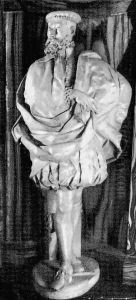John Bushnell Paintings
John Bushnell was an English sculptor whose life details are not well-documented; hence, his exact birth year is not known. He is believed to have been active during the 17th century, primarily during the Restoration period, which followed the English Civil War and the Interregnum. Bushnell is known for his work in England, where he made significant contributions to funerary monuments and the ornamentation of architecture.
Bushnell's career in sculpture is marked by several notable works. Among these are the statues of King Charles I and King Charles II which were commissioned for the Royal Exchange in London. Unfortunately, these statues were destroyed in the Great Fire of London in 1666. Despite this loss, Bushnell continued to receive commissions and worked on several other important projects.
One of Bushnell's most recognized works is the monument to Thomas Thynne in Westminster Abbey, which he completed in 1670. This monument is distinguished by its elaborate design and the quality of the sculpture. He also worked on the tomb of John Maitland, Duke of Lauderdale, which further cemented his reputation as a skilled sculptor of funerary monuments.
Despite his achievements, details about Bushnell's training and early life remain obscure. It is assumed that he likely had some form of apprenticeship or training in the arts, as was common for sculptors of his time. Furthermore, the lack of comprehensive records from the period has made it difficult for art historians to trace his full career and influence.
John Bushnell's contributions to sculpture and the arts were part of the broader context of the Restoration period, a time when England was undergoing significant changes both politically and culturally. His works reflect the baroque tendencies of the era, with a focus on grandeur and intricate details.
Bushnell died in 1701, leaving behind a legacy that would influence English sculpture. Though not as well-known as some of his contemporaries, his work represents an important part of the artistic heritage of the late 17th century. Unfortunately, as with many artists of the past, the paucity of records has resulted in a limited understanding of his full impact on the art world.
